Introduction
Whatever your mind tells your body to do, it does. To bring your independent self into harmony with the future, you must take charge of your activities. The accumulation of many different types of molecular and cellular damage over time is the fundamental basis for aging. As a result, one's physical and mental abilities decline with time, one's susceptibility to disease increases, and one's life expectancy shortens. These alterations are not constant nor linear, and they are only tangentially related to chronological age. Older people's health is negatively affected in every way by ageism. Life expectancy is lowered, mental and physical health deteriorates, rehabilitation from a disability is slowed, and cognitive decline is hastened.
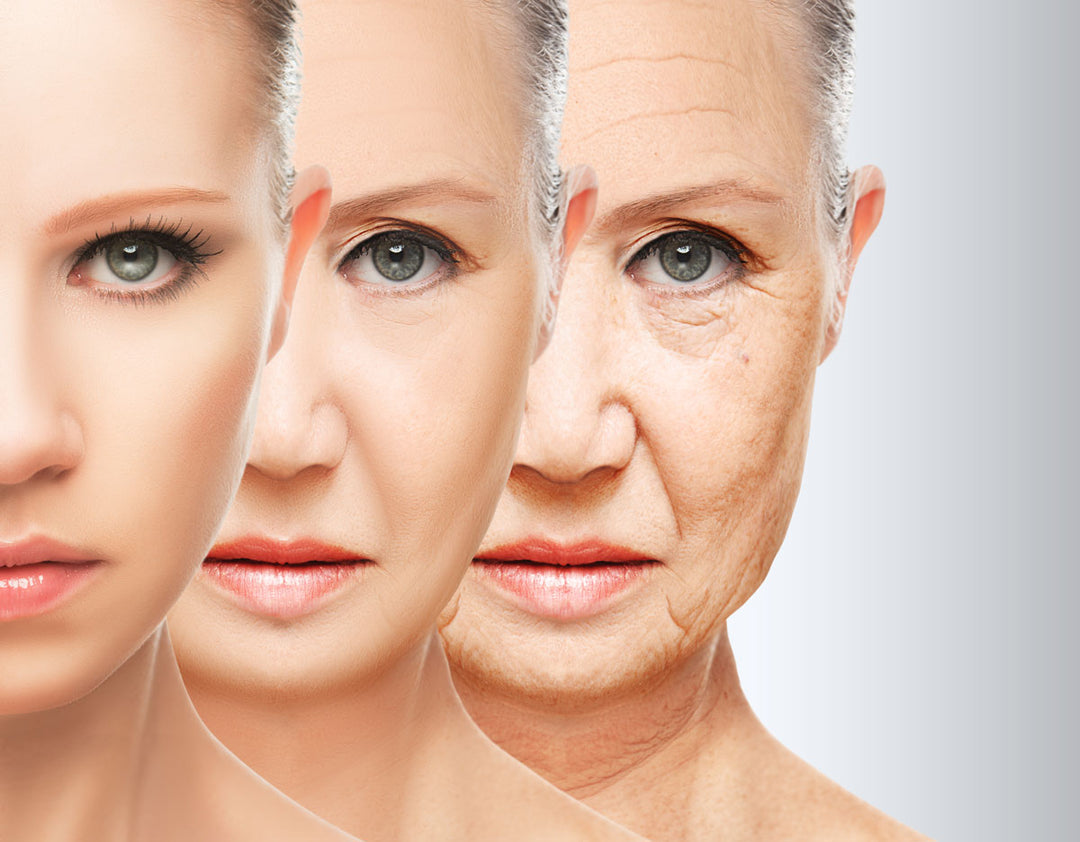
Although chronological age is associated with several disorders and diseases that are commonly associated with advancing age, it is not a reliable indicator of a person's functional ability, well-being, or mortality risk. In contrast, a person's biological age may be used to gauge their rate of aging and give insight into their general health. Aging clocks are computational models (e.g., elastic net) that employ a set of inputs (e.g., DNA methylation sites) to create a prediction, and these predictions are considered to offer estimates of biological age. Many age-related illnesses, social factors, and mental health issues have been linked to an increase in biological age as indicated by aging clock research during the past decade. This rapid aging is associated with an increased danger of dying young.
Disclaimer
The content here is not intended to replace your relationship with your own medical practitioner. Always speak with your doctor before using any of the information on this website. Individual results may vary. Some of the links within this resource are affiliate links
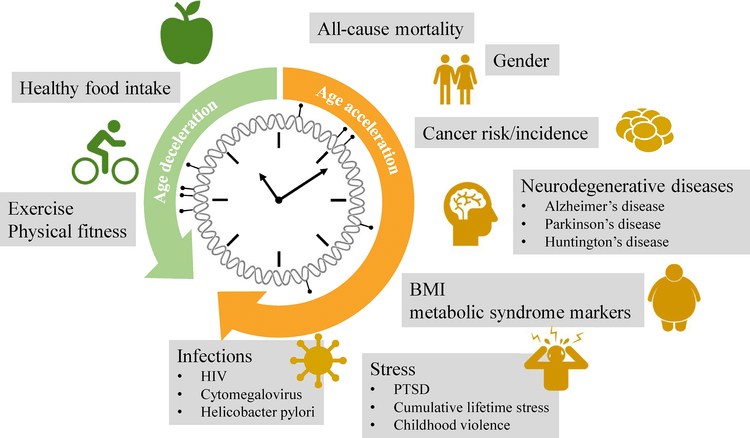
Further studies have shown that the estimated biological age responds differently to various therapies. Many interventions have been shown to be effective in delaying or even reversing the aging process in human studies, including calorie restriction, a plant-based diet, lifestyle adjustments including exercise, and vitamin D3 supplementation. High-quality sleep, exercise, and a nutritious diet have all been linked to slower aging in observational studies.
The best plan for a healthy future
- Blood Tests every 90 days to detect diet-induced inflammations.
- Neuroendocrine panel
- Extensive testing for checking cardiovascular health, bone density, and to detect oxidative stress, cancer environmental toxins.
- One meal a day.
- Micronutrients test. This was to understand the insufficiencies in the body and how to address them with supplements, vitamins, and food
- Microbiome analysis for gut health
- Blood glucose monitoring
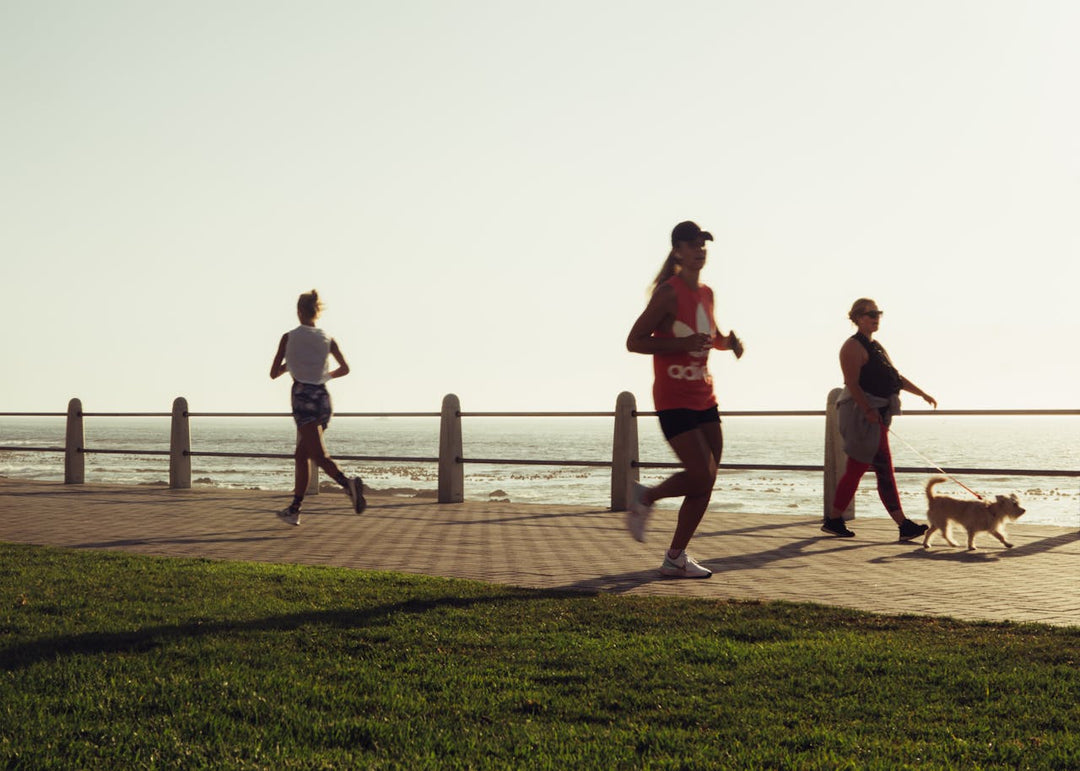
For many of us, the daily routine probably sounds like a living hell.
Get up every day at the same time, and take your vitamins and supplements. Exercise for at least an hour, consume a green juice spiked with creatine and collagen peptides, and finish it with a rinse of tea tree oil and antioxidant gel for your teeth. To help get a goodnight’s sleep put on blue-light-blocking spectacles at least two hours before bedtime.
The Biohackers Longevity Guide
Lifestyle Modification has a potential to Reverse Aging
Scientists have long understood that what truly lengthens your life and keeps your later years healthy are the basics we’ve known about for ages: Eat a healthy diet filled with vegetables, exercise regularly, invest in healthy relationships, reduce stress, and get enough sleep, for example. (6)
Following are the major requirements that our body needs to stay healthy and young:
Macronutrients
The key to a healthy diet is moderation. Energy, muscular growth, and basic physical processes all require the consumption of macronutrients like protein, carbohydrates, and fat. You eat right, exercise, and take care of yourself... so why aren’t you feeling your best? The answer may lie in your nutritional status. The Micronutrient panel from Vibrant Wellness can give you a comprehensive look at how well your body is absorbing and utilizing essential nutrients. With this information, you can determine specific micronutrientdeficienciesthat guide dietary or supplementation protocols with precision.

Vitamins & Minerals
The body requires a wide range of vitamins and minerals in addition to the three macronutrients. Vitamin D aids in the absorption of calcium, which is essential for healthy bones, while iron plays a part in the formation of hemoglobin, which carries oxygen throughout the body. Folate, magnesium, selenium, zinc, and the vitamins A, D, E, K, and B complex are some other vital nutrients. The Centers for Disease Control and Prevention acknowledge that taking a multivitamin every day can be beneficial to health, but they stress the importance of receiving all the nutrients you need from food instead. In addition, making meals at home and opting for fresh foods over boxed or canned things is the easiest way to reduce salt intake, which can help prevent hypertension and other disorders.(7)

Exercise Build Muscle
Consistent physical activity complements proper eating as a means of maintaining a strong and healthy body. According to the Cleveland Clinic, regular exercise has many other health benefits, including the maintenance of bone mass, reduced blood pressure, cholesterol, and blood sugar levels, decreased stress, and enhanced sleep. Cardiovascular activity, strength training, flexibility training, and balance and agility drills are the four cornerstones of a well-rounded fitness regimen. Talk to your doctor about the best and safest way to start exercising if you've been inactive for a long time.

Adequate Water Intake
According to the CDC, the amount of water your body requires to keep healthy varies depending on your level of physical activity and the environment in which you reside. Water is essential for body temperature maintenance, joint lubrication and cushioning, waste elimination (urination, sweating, defecation), and spinal cord protection. Have a water bottle with you at all times to ensure you get enough fluids. It's important to stay hydrated before, during, and after exercise. The old adage about consuming 8 glasses of water a day is no longer relevant. Women should aim for 2.2 liters per day, while men should aim for 3 liters per day of water consumption. To track hydration effectively, monitor urine color, thirst levels, energy, and skin elasticity. Using a hydration journal, app, or smart water bottle can help maintain consistency. Adjust intake based on activity levels, climate, and individual needs to stay within the 7-10 range for peak hydration.

Acquiring 10 to 12 Hours of Sleep
The ideal goal to extend longevity is between ten and twelve hours of sleep every night. Just look at Roger Federer. The man is a tennis legend, and even he makes sure to get enough sleep! In fact, he gets 12 hours of sleep every single day. Athletes and high performers around the world have recognized the importance of sleep in recovery, training harder and better, and staying fit.
Sleep deprivation has been linked to an increased risk of diabetes, cardiovascular illness, and mental problems, as well as an increased incidence of car accidents and a reduced capacity for focus and memory. Create a routine where you get up and go to bed at the same time every day (including on the weekends) if you want to improve the quality of your sleep. Figure 7. Create a relaxing sleeping environment in a cool, dark room with a comfortable mattress and pillow. (7)

Keeping from Gaining too Much Weight
Several U.S. citizens are overweight. Several health problems are associated with being overweight. Several examples are listed below:
- High blood pressure
- High cholesterol
- Type 2 diabetes
- Heart disease
- Stroke
- Some cancers
- Gallbladder disease
Weight-related injuries are another risk associated with obesity. Arthritis in the weight-bearing joints, including the spine, hips, or knees, is a prevalent issue. You may lose weight and keep it off by using a few different strategies.
Skin Protection
Skin cancer is exacerbated by time spent in the sun. The United States has the highest incidence of this kind of cancer. Spending too much time in the sun might cause skin damage. Before venturing outside, always remember to dress in protective gear and use a hat. Always apply sunscreen to exposed areas of skin, such as the face and hands. It serves as a shield against the sun and aids in avoiding skin cancer. Choose a sunscreen that offers protection from both UVA and UVB radiation. There ought to be at least an SPF 15 on it. Don't go tanning or sunbathing. Figure 8.
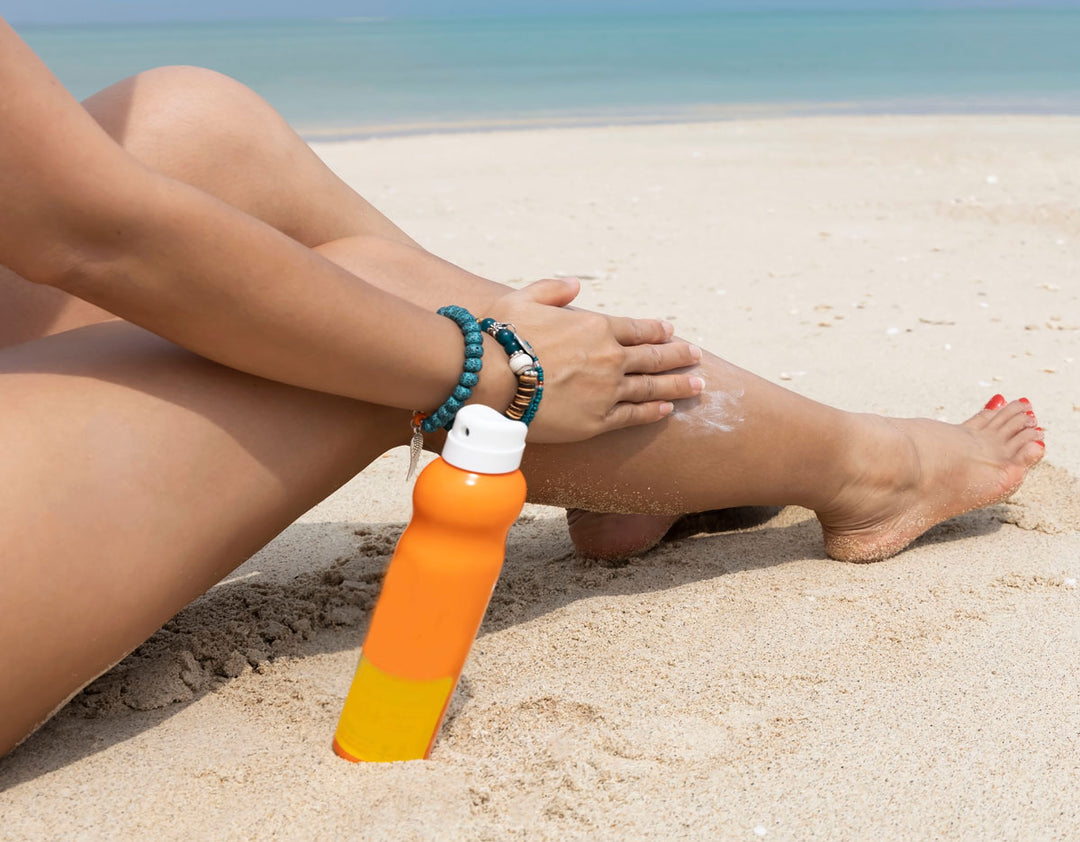
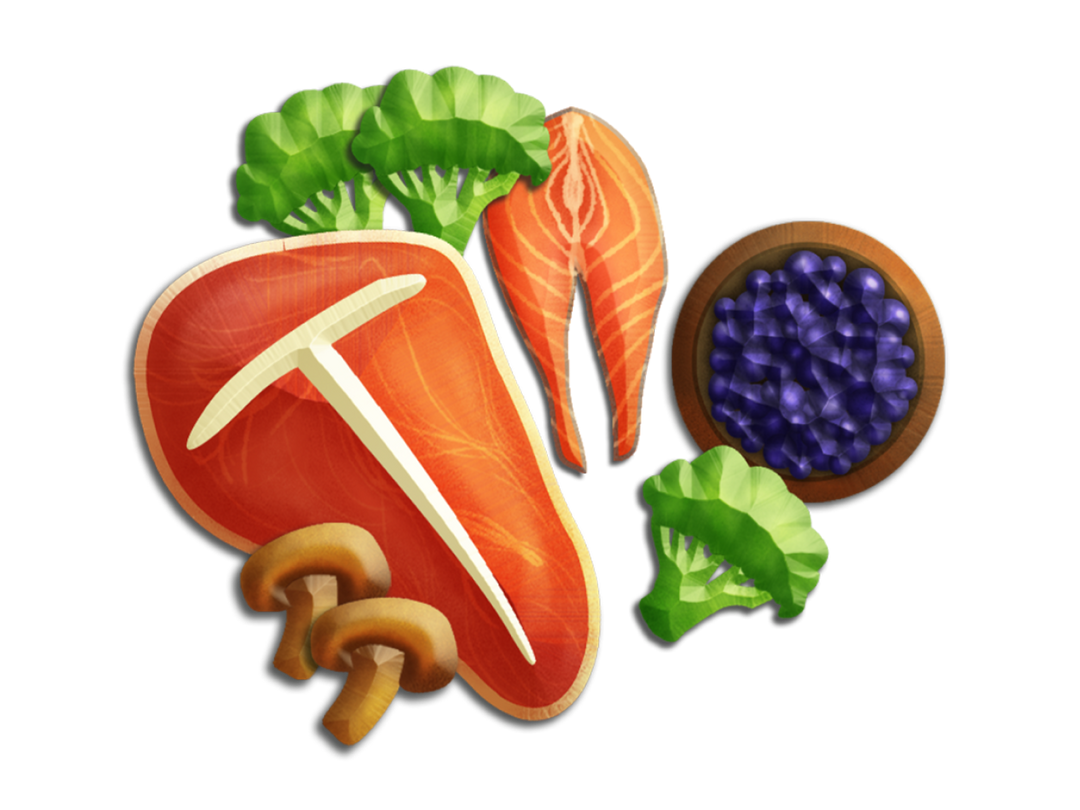
Lean Proteins
Protein plays a pivotal role in our body, from repairing tissues and building muscles to producing enzymes and hormones. As we age, maintaining adequate protein intake becomes even more crucial to combat muscle loss, known as sarcopenia.
Example of Sources of Lean Protein
- Legumes: Beans, lentils, chickpeas, and peas
- Quinoa: Unlike most plant-based foods, quinoa is a complete protein, making it a great choice for vegetarians and vegans.
- Protein-Rich Vegetables: Some vegetables, like spinach, broccoli, and Brussels sprouts, have a decent amount of protein per serving.
- Tofu and Other Soy Products: Tofu, tempeh, and edamame are all high in protein and are staples in many vegetarian and vegan diets.
- Unsalted Nuts and Seeds: Almonds, walnuts
- Fish and Seafood: Fish like salmon, tuna, and mackerel are not only high in protein but also rich in heart-healthy omega-3 fatty acids
- Eggs: Eggs are one of the most complete sources of protein
- Lean Meats: They provide important nutrients like iron and vitamin B12.
- Lean or Low-Fat Dairy: Greek yogurt, cottage cheese, and skim milk are high in protein.
Summary
The best approach to acquire enough of these six necessary nutrients is to eat a diversified diet rich in fruits, vegetables, nutritious proteins and fats, and whole grains. This will also help you receive enough phytonutrients, the beneficial compounds in colored plants that prevent illness. Figure 9. You need these macronutrients and micronutrients for optimal health and appropriate bodily function.
Age Reversal Strategies
There are various strategies that we can adopt to reverse or reduce our aging process and stay young for a longer period of time.
Low Caloric diet
It's common knowledge that people who are overweight may improve their health by reducing their calorie intake. This, however, is the first long-term investigation of calorie restriction in persons who are not overweight. Some disease risks can be mitigated, and even the aging process slowed, by maintaining a calorie deficit of up to 25%. According to research published on Thursday in the journal Nature Aging, reducing caloric intake appears to reduce the rate of aging and prolong longevity in healthy individuals.
This is the first randomized controlled experiment to examine the effects of calorie restriction over the long term, and it was financed by the National Institute on Aging at the National Institutes of Health. It further supports the idea that a low-calorie diet has several positive health effects, including anti-aging effects. (10)
Diet to Prevent Aging
Being older often means you'll become sick more often and have a generally worse quality of life. Alterations in the rate and pattern of cell division, modifications to the gene expression that controls this process, and other cellular alterations, such as mitochondrial malfunction and stem cell depletion, may be among the biological signs of aging. (11)
It's common knowledge that there are 46 chromosomes in every human cell. The DNA strands at the ends of these chromosomes are capped by structures called telomeres. The telomeres shrink and finally die off as we age. Delaying or even reversing aging depends on slowing or reversing this process. A plant-based, whole-food diet is mentioned as a possible means to this end in the study. A plant-based, whole-food diet for three months was associated with a considerable increase in telomerase activity in a study financed by the United States Department of Defense. (12)
Test for which foods you should consume and which to avoid.
About the Food Sensitivity Test
The Food Sensitivity panel can assess your sensitivity to common foods in the Western diet. Sensitivity to certain foods can develop from a variety of health conditions and result in a vicious cycle of inflammation and food triggers. If you are diagnosed with or suspect intestinal permeability, autoimmune disorders, or chronic inflammation you may benefit from a food sensitivity panel.
Why Is This Test Important?
Food intolerance affects 15-20% of the population. Symptoms of food sensitivity are generic and mimic other conditions, making diagnosis difficult and increasing unnecessary suffering. Trigger foods and food sensitivities contribute to leaky gut and harm the intestinal lining, causing inflammation. Chronic inflammation is associated with serious diseases, including heart disease, diabetes, cancer, arthritis, autoimmune disease (ex: Crohn’s, celiac or ulcerative colitis).
Do you struggle with these symptoms?
- Gas
- Bloating
- Abdominal pain
- Diarrhea
- Constipation
- Brain fog
- Musculoskeletal joint pain
- Muscle stiffness and swelling
The Advantage of the test.
Simple testing with robust results.
Unparalleled specificity and sensitivity. Our proprietary technology detects:
Food Sensitivity with 95%-100% accuracy
IgA and IgG antibodies
Sensitivity to 209 different foods.
Cooking Techniques
There are some cooking techniques that you can use to maximize the benfits of your plant based diet that are as following:

Steam, don’t boil
While cooking, less is more in terms of both time spent in the oven and heat, as well as the amount of liquid used. That's why steaming is such a great method for cooking a wide variety of veggies. This is especially true for broccoli, which has been hailed for its cancer-fighting properties for quite some time.
Broccoli florets with a purple, dark green, or bluish hue on top are more nutritious than those with a lighter green color because they contain more beta carotene and vitamin C.
Peas, cauliflower, and zucchini lost more than half of their antioxidants while boiling, according to a 2009 research. It was concluded by the researchers that "water is not the cook's greatest buddy" when it comes to cooking veggies.

Saute, don’t fry
Deep frying causes veggies to lose moisture, according to studies. But, many veggies taste best when sautéed in a dab of healthy cooking oil, such extra-virgin olive oil. Artichokes, broccoli, celery, eggplant, green beans, onions, and spinach all maintained their antioxidant capacity after being baked, according to a 2009 research from Spain. Green peppers are no longer effective antioxidants. Lycopene, an antioxidant linked to a lower risk of Alzheimer's disease and several types of cancer, is abundant in oven-roasted tomatoes.
Cooking, in general, and roasting in particular bring out the best in tomatoes. Tomatoes are technically a fruit, and research shows that slicing them and cooking them in some way releases more of the antioxidant lycopene from the fruit's cell wall. Figure 13. The addition of a little olive oil or another healthy fat is helpful as well. (18)
High-Intensity Exercise helps to slow down aging
You don't have to be Chris Hemsworth to work out for simply an hour every day at the gym, using your own weights at home, or walking on the sidewalk. Workout for a minimum of an hour every day, three days a week. High-intensity interval training (HIIT) has also been associated with unique longevity advantages. (21)
You may have heard that exercising slows down the aging process, but what does this actually mean? The truth is that exercise can prevent many of the problems associated with aging, preventing illnesses and ailments that are more likely to affect sedentary persons, especially as they age. Exercise can be very beneficial to prevent typical physical and mental issues that develop with aging, as we all know there are many advantages to remaining active.

How Exercise Reverses Aging
Improves cardiovascular function that declines with age
Your heart is a muscle, and if it doesn't get enough use, it will get weaker as you get older. According to Harvard Health Publications, regular cardiovascular activity, such as jogging, walking, swimming, and cycling, strengthens the heart and can even partially undo the effects of aging on the organ. With time and inactivity, the left ventricle of your heart and your arteries stiffen, which can cause high blood pressure and hasten the aging of your heart. 150 minutes per week of moderate cardiac activity improves heart function, reduces stiffness, and may even slow some heart aging.
Combats muscle loss that occurs with age
People lose muscle mass with age. Muscle mass decreases about 3 to 8 percent after the age of 30 and declines even faster after age 60, according to research. Resistance exercise reverses aging by combatting this muscle loss and improving your lean muscle mass. If you strength train at least twice per week, you will see improvements in your muscle mass and experience less deterioration of muscles as you age.
Improves balance and coordination and reduces your risk of injuries
Regular cardio exercise and strength training will help you retain and improve your sense of balance and coordination as you age. This is important for a better quality of life for older adults. Aging causes a decline in sensory systems and the musculoskeletal system, and a fitness program that includes strength training and cardio exercise helps slow the decline of balance and coordination that comes with age.
Boosts brain health
Exercise improves mental health benefits and also boosts cognitive functioning. Regular physical activity is linked to reduced risk of dementia, including Alzheimer’s disease, according to studies.
Combats bone loss that occurs with age
Bone mass stops increasing after age 30, and by the 40s and 50s, bone tissue starts to break down more than it’s replaced. Bone mass declines even faster for women aftermenopause. Resistance training helps slow down this bone loss process from aging, reducing the damage to bones. Strength training helps prevent bone conditions related to loss of bone density such as osteoporosis.
Delays onset of chronic conditions
Exercise helps delay the onset of 40 chronic diseases and conditions, according to researchers. Regular exercise helps prevent and delay the onset of coronary heart disease, diabetes, osteoarthritis, osteoporosis, bone fractures, colon cancer, breast cancer, cognitive dysfunction, hypertension, obesity, and other chronic conditions.
Red light therapy can help you sleep well and stay young
Red light therapy (RLT) is a treatment that may aid in the healing of muscle, skin, and other body tissues. You are subjected to very little near-infrared or red light. Your body can sense infrared light as heat even though your eyes cannot see it. Infrared and red light are similar, but red light may be seen. Low-level laser therapy (LLLT), low-power laser therapy (LPLT), and photobiomodulation are other names for red light therapy (PBM).
Medical professionals are interested in light therapy as a secure alternative treatment for photoaging and photodamaged skin. Red or infrared light delivered by light-emitting diode (LED) devices in clinical settings has been found to enhance tissue healing, encourage regeneration, and rejuvenate skin. However, prior studies have not examined the effect of submilliwatt/cm2 levels of red or infrared light on skin in order to determine whether the low level red or infrared light therapy is effective for photoaging. A recent study has suggested that the therapeutic activity of red or infrared light may be effective at much lower energy levels than are used clinically. This study set out to determine whether low-level red or infrared LED light had any impact on the expression of extracellular matrix (ECM) proteins in human skin cells.
Daily irradiation with red (640 nm) or infrared (830 nm) LED lights or combinations of red/infrared LED lights at 0.3 J/cm2 (0.5 mW for 10 minutes) was used to induce ECM protein expression in primary human dermal fibroblasts or human skin tissues derived through cosmetic surgery. The levels of gene and protein expression were studied using real time qPCR and ELISA, respectively, and histology, respectively. Moreover, ECM cross-linking, an indicator of functioning ECM proteins, was evaluated using a new noninvasive fluorescence technique. Hyaluronic acid synthase (HAS2) and elastin (ELN) gene expression in human fibroblasts was shown to be dramatically increased after as little as 3 days of treatment with low intensity red and infrared LED lighting. Human fibroblasts exposed to red or infrared light also enhanced their production of hyaluronic acid, collagen protein, and elastin protein.
Gene expression of HAS2, ELN, and collagen types Col1A1 and Col3 was similarly induced within 1 week when human skin explants were treated with low intensity red and infrared LED lighting. Furthermore, it was revealed that fluorescence-measured procollagen and elastin fiber production in human skin explants was enhanced after treatment with low-level red and infrared LED lighting. Our findings conclude that exposure to low-intensity red and infrared light strongly induces the expression of extracellular matrix proteins in human skin. As low-intensity red and infrared light boosted anti-aging skin biomarker synthesis, it's worth investigating further. Our results imply that patients with photoaging and photodamaged skin may benefit from regular, at-home therapies using modest levels of red and infrared light. (23)
How Does Red Light Therapy Work?
With red light therapy, you expose your skin to a lamp, device, or laser with a red light. A part of your cells called mitochondria, sometimes called the “power generators” of your cells, soak it up and make more energy. Some experts think this helps cells repair themselves and become healthier. This spurs healing in skin and muscle tissue.
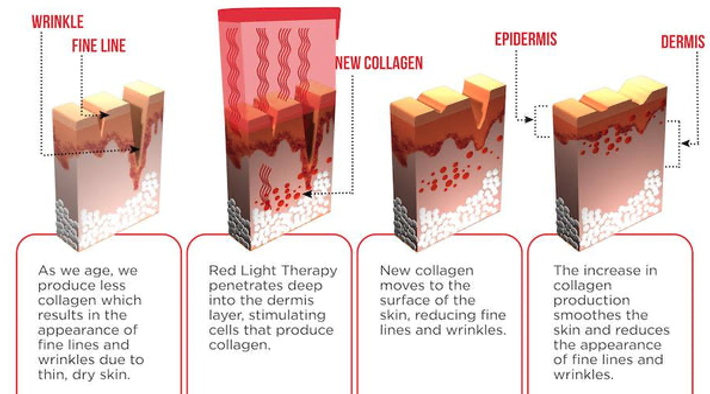
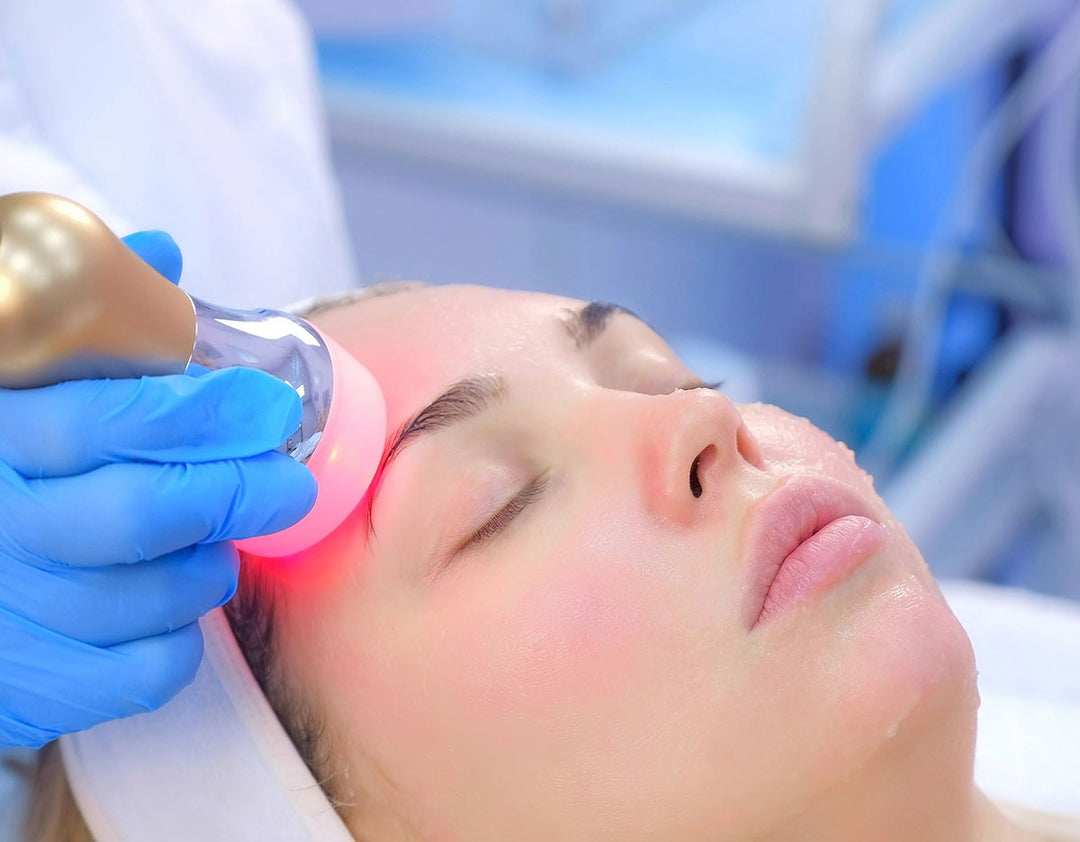
1. https://pubmed.ncbi.nlm.nih.gov/35778957/
2. https://www.who.int/news-room/fact-sheets/detail/ageing-and-health#:~:text=At%20the%20biological%20level%2C%20ageing,of%20disease%20and%20ultimately%20death.
3. https://pubmed.ncbi.nlm.nih.gov/35778957/
4. https://www.thelancet.com/journals/lancet/article/PIIS0140-6736(21)00524-9/fulltext#:~:text=Ageism%20impacts%20all%20aspects%20of,disability%2C%20and%20accelerates%20cognitive%20decline.
5. https://hello100.com/blueprint-project-and-reverse-aging/
6. https://www.vice.com/en/article/epzyza/bryan-johnson-the-blueprint-age-reversing-diet-review
7.https://www.everydayhealth.com/self-care/can-healthy-habits-really-make-you-younger/
8. https://healthyeating.sfgate.com/what-ate-lose-weight-noom-13771700.html
9. https://familydoctor.org/what-you-can-do-to-maintain-your-health/
10. https://www.nbcnews.com/health/health-news/calorie-restricted-diet-may-slow-aging-healthy-adults-science-shows-rcna69562
11. https://www.healthline.com/health/food-nutrition/six-essential-nutrients#water
12. 1. Rebecca K.Lane et al. The role of mitochondrial dysfunction in age-related diseases.Biochimica et Biophysica Acta (BBA) - Bioenergetics. Volume 1847, Issue 11, November 2015, Pages 1387-1400.
13. Ornish D et al. Increased telomerase activity and comprehensive lifestyle changes: a pilot study. Lancet Oncol. 2008 Nov;9(11):1048-57.
14. Paul S. Bernstein et al. Lutein, Zeaxanthin, and meso-Zeaxanthin: The Basic and Clinical Science Underlying Carotenoid-based Nutritional Interventions against Ocular Disease. Prog Retin Eye Res available in PMC 2017 Jan 1.
15. Krithiga Shridhar et al.The Association between a Vegetarian Diet and Cardiovascular Disease (CVD) Risk Factors in India: The Indian Migration Study. PLoS One. 2014; 9(10): e110586.
16. Chelsea M. Clinton et al.Whole-Foods, Plant-Based Diet Alleviates the Symptoms of Osteoarthritis.Arthritis. 2015; 2015: 708152.
17. https://blueprint.bryanjohnson.co/#step-1-meal-prep
18. https://edition.cnn.com/2016/05/05/health/healthy-vegetable-cooking/index.html#:~:text=When%20in%20doubt%2C%20microwave.,that%20break%20down%20when%20heated.&text=Sauteing%20in%20a%20bit%20of,way%20to%20cook%20many%20vegetables.
19. https://blueprint.bryanjohnson.co/#step-1-meal-prep
20. https://novoslabs.com/expert-longevity-perspective-from-novos-on-bryan-johnson-and-project-blueprint/#whatisblueprint
21. https://www.runstreet.com/blog/exercise-reverses-aging#:~:text=By%20combining%20a%20program%20of,strength%20training%20workouts%20a%20week.
22. https://www.jaad.org/article/S0190-9622%2819%2933160-3/fulltext
23. https://www.webmd.com/skin-problems-and-treatments/red-light-therapy
24. https://novoslabs.com/expert-longevity-perspective-from-novos-on-bryan-johnson-and-project-blueprint/#whatisblueprint
25. Gordon ML. A conservative approach to the Nonsurgical Rejuvenation of the face. Dermatol Clin 2005;23:365-71.
26. Yaar M, Gilchrest BA. Aging of skin. In : Freedberg IM, Eisen AZ, Wolff K, Austen KF, Goldsmith LA, Katz SI, editors. Fitzapatrick's Dermatology in general medicine, 5th ed. McGraw Hill: New York; 1999. p. 1697-706.
27. Farris PK. Topical Vitamin C: A useful agent for treating photoaging and other dermatalogic conditions. Dermatol Surg 2005;31:814-7.
28. https://www.dvcstem.com/post/anti-aging-stem-cells#:~:text=Regenerative%20stem%20cell%20therapy%20rejuvenates,effects%20of%20the%20aging%20process.29. https://www.ncbi.nlm.nih.gov/pmc/articles/PMC7041784/30. https://www.mayoclinic.org/healthy-lifestyle/sexual-health/in-depth/testosterone-therapy/art-2004572831. https://novoslabs.com/expert-longevity-perspective-from-novos-on-bryan-johnson-and-project-blueprint/#whatisblueprint
